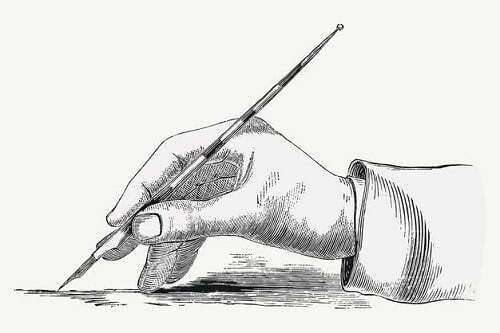Table of Contents
Despite his demise at the tender age of 25, John Keats continues to be one of the greatest English poets and figures in the Romantic movement. People often compare him to the archetype of the “young, beautiful, doomed poet.”
Several of his poems channeled various forms, such as the Miltonic epic, the Spenserian, and the sonnet. If you are interested in knowing more about this literary wonder, then read on to know some of the best John Keats’ works.
John Keats Life and work

- Born on 31 October 1795, Keats did his education in Enfield. He began writing his first poems in 1814 and abandoned medicine in 1816 to pursue poetry. Thereafter, in 1817, his first volume of poetry was officially published.
- In 1818, Keats’ brother Tom was in the final stages of tuberculosis, the same disease that took their mother’s life. Consequently, Tom died in December of the year. After his death, Keats moved to his friend’s house in Hampstead, where he met and fell in love with 18-year-old Fanny Brawne.
- From then until the early months of 1820, Keats produced some of his most distinguished work, including-
- The Eve of St. Agnes
- Odes (A group of 5 odes)
- Lamia
- On First Looking into Chapman’s Homer
- In 1820, John Keats began displaying the onset symptoms of tuberculosis. His next volume of poetry was published in July, but his disease was wreaking havoc on his body. In September, Keats left for Italy, hoping that the warmer weather would improve his health.
- However, when he arrived in the country, he was confined to bed. Keats succumbed to the disease on 23 February 1821 in Rome. His body was buried in Protestant Cemetery.
Best John Keats poems

Keats’ poems were often marked by vivid imagery, incredible sensual appeal, and an attempt to express a philosophical opinion. Studying John Keats’ works can often help students gain an insight into his brilliant ideologies, source of inspiration, and perspective on the world. Incorporating traditional writers such as Keats with the modern works of Arundhati Roy and other authors into literature studies can give students a holistic understanding of the world of literature.
Here are the five of John Keats’ famous works for every student to read.
1. To Autumn
- ‘To Autumn’ is one of Keats’ last and most appreciated literary works. His method of creating this poem involved overwhelming the reader with imagery. He personifies autumn and perceives the season as being in a constant state of activity.
- John Keats brings the readers’ attention to the ripening of apples and grapes, the swelling of hazelnuts and gourds, and the blooming of flowers. The readers are roped into characteristic autumn activities like threshing, gleaning, and reaping.
- While people call ‘To Autumn’ an ode, Keats did not call it one. It, however, is replete with the characteristic rich imagery of odes.
2. Ode to Psyche
- Written in four stanzas, ‘Ode to Psyche’ represents one of the significant structures of Keats’ odes. This makes for an interesting literary study, with variations across rhyme schemes, metrical schemes, and a number of lines.
- Keats’ poem addresses the goddess Psyche, describing her as the most beautiful Olympian goddess. After that, he goes on to say that she does not have the trappings of worship like her Olympian counterparts. She does not have any choir, altars, or temples to her name.
- John Keats believes this to be the result of her age and how young she is. But through this ode, Keats says he will become Psyche’s priest and create a temple for her in his mind.
- ‘Ode to Psyche’ is a significant literary work because it embodies his ideal of love attainable only in the imagination.
3. Ode to a Nightingale

- John Keats’ ‘Ode to a Nightingale’ has a classical ode structure with a uniform rhyme scheme. Keats uses this poem to give his thoughts and emotions a free expression.
- Through this poem, Keats focused on sharing an experience with the reader rather than recall an experience. The experience, while not entirely coherent, happens when Keats is listening to a nightingale sing.
- His thoughts make him aware of the unhappiness he experiences, and Keats seeks to use the imagination to escape.
- Here, one of the main themes is Keats’ preoccupation with death. This could be his response to the multitude of frustrations that were a part of his life around May 1819, when the ode was written.
4. The Eve of St. Agnes
- ‘The Eve of St. Agnes’ is one of John Keats’ more extended and descriptive poems. This a poem that is replete with examples of innate sensuousness with imagery such as: “Brushing the cobwebs with his lofty plume.”
- Keats wrote this poem soon after he and Fanny Brawne fell in love in 1819. Critics across the world view this poem as Keats’ celebration of his first experience of romance.
- The heavy descriptions with significant attention to detail display how Keats worked to create pictures in the readers’ minds.
5. Bright Star
- ‘Bright Star’ is about an individual who is passionately in love and wishes to spend eternity in their lovers embrace, passionate enough to feel them breathe. Keats writes that the individual is frantic to express this desire, indicating that it has not yet been realized.
- One of the key elements of the poem is that the reader is not given information on the speaker. The poem, instead, delivers the intense emotion of love towards another person.
- A sense of time and place is irrelevant in this poem. The effect created is purposeful and indicative of John Keats’ depth of emotion towards Fanny Brawne.
Read more: Why Students Abandon Applications
Key takeaways
- Keats is recognized for his work as a romantic poet. His themes and styles often included vibrant imagery and sensual undertones.
- Keats lived up to the age of 25 but published two volumes of poetry at that time.
- Studying Keats’ poetry can help students understand one of the best poetry styles in English literature.
- Keats’ poems also shed light on how he viewed the world around him when he penned the poem.
We hope you enjoyed reading about John Keats’ works! Have any thoughts? Reach out to us or drop a comment below!
Liked this blog? Read next: English Literature | 9 important things you should know!
FAQs
Q1. Which are the poems published in the famous 1820 volume of John Keats?
Answer – ‘The Eve of St. Agnes,’ ‘Lamia,’ and ‘Isabella’ are among some poems in his famous 1820 volume.
Q2. What does ‘La Belle Dame sans merci’ mean?
Answer – ‘La Belle Dame sans merci’ is John Keats’ poem in 1820 volume and means ‘The Beautiful Lady Without Pity.’
Q3. What are the themes of John Keats’ odes?
Answer – The different themes of John Keats’ odes include-
- Changes within the Physical World
- Transcendence
- Eternal Dichotomies







EXCELLENTPOST ON INSIGHTS!!!!!
EXCELLENT POST!!!!!!